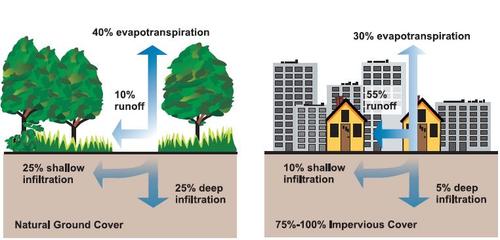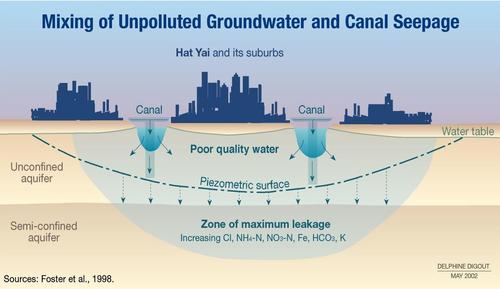Urban areas
In areas where surface water is not readily available (located far from areas of need), groundwater is the primary water source. Groundwater aquifers supply an estimated 20% of the global population living in arid and semi-arid regions. Despite their widespread presence, groundwater aquifers in arid areas receive only limited or seasonal recharge, making such aquifers susceptible to rapid depletion.
Where cities are located above productive aquifers and are far from surface water supplies, usually groundwater is the primary freshwater source. Although urban aquifers meet the growing water demands of several major cities today (Merida, Madras, Bangkok, Hat Yai, Santa Cruz, Dakar), major problems are being caused by unregulated groundwater exploitation, and the disposal of solid and liquid wastes above or into these aquifers. A growing number of large urban center aquifers are facing pollution from organic chemicals, pesticides, nitrates, heavy metals and waterborne pathogens.
The level of water and wastewater service provision can also radically alter aquifer replenishment mechanisms, affecting not only the dynamic equilibrium between increased recharge availability and pumped withdrawals, but also the magnitude of the pollutant load and the rate of aquifer contamination. All these problems occur, to a certain degree, in towns and cities, depending on their type of groundwater supply.
(UNEP 2008)

